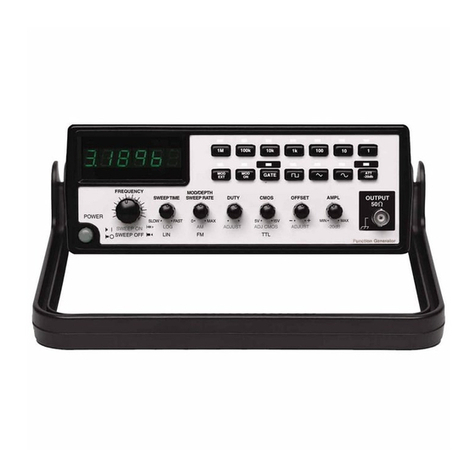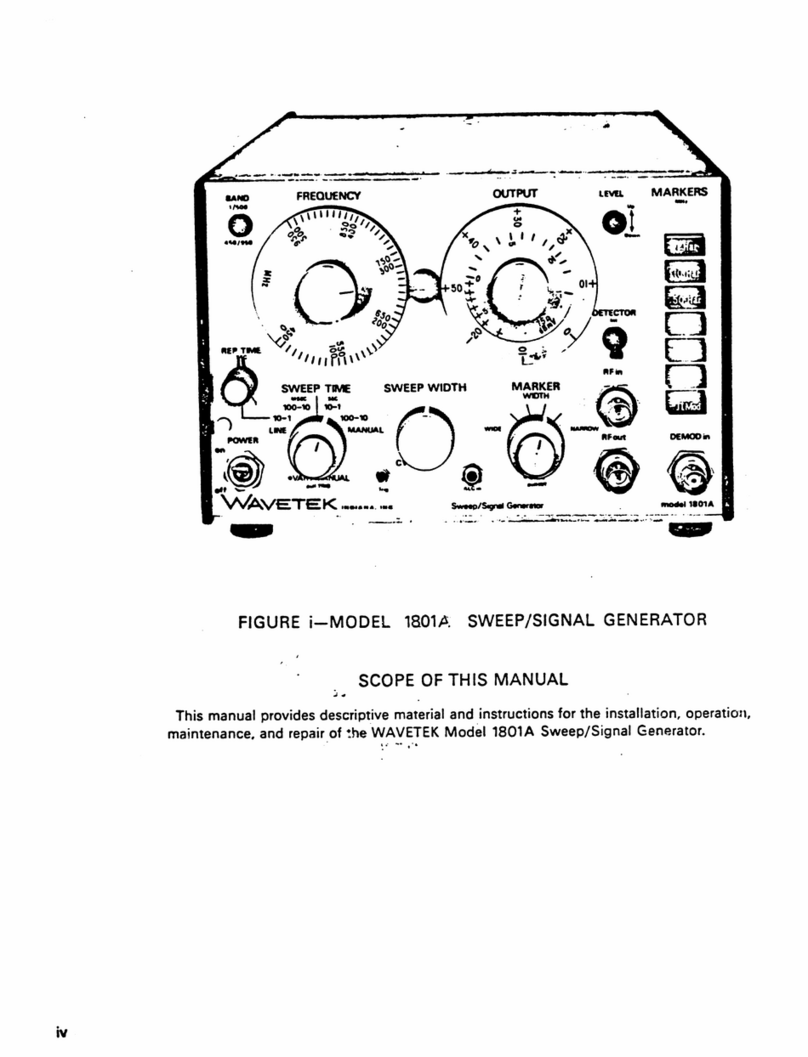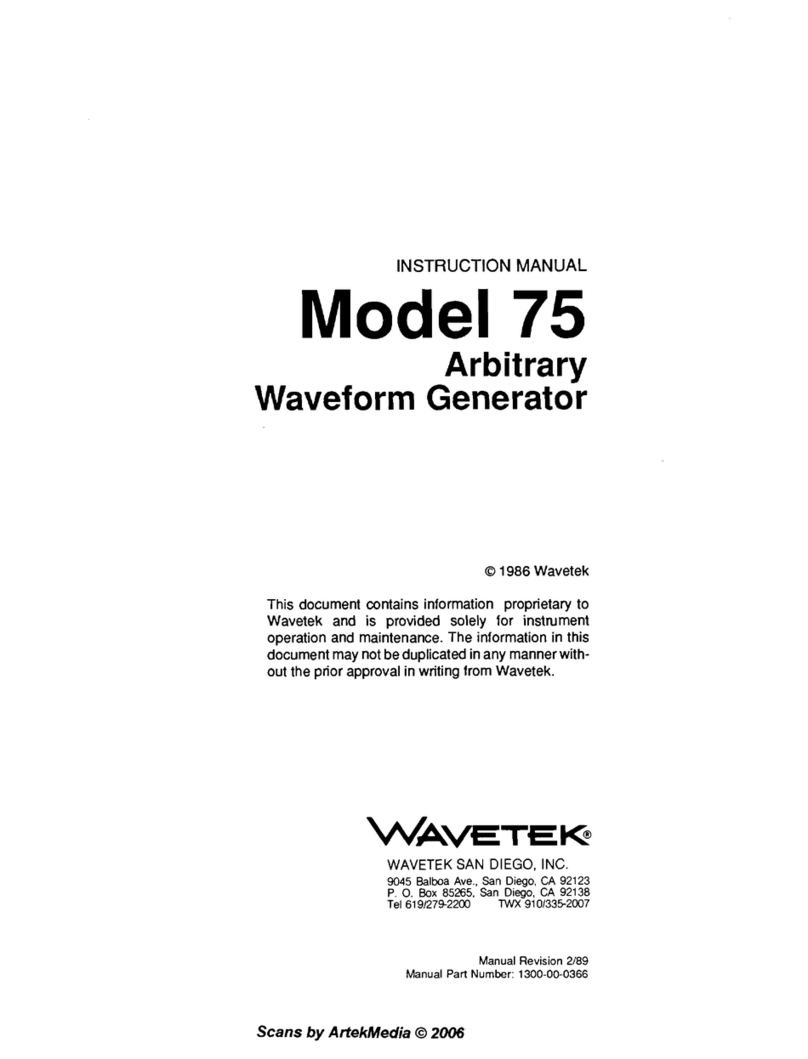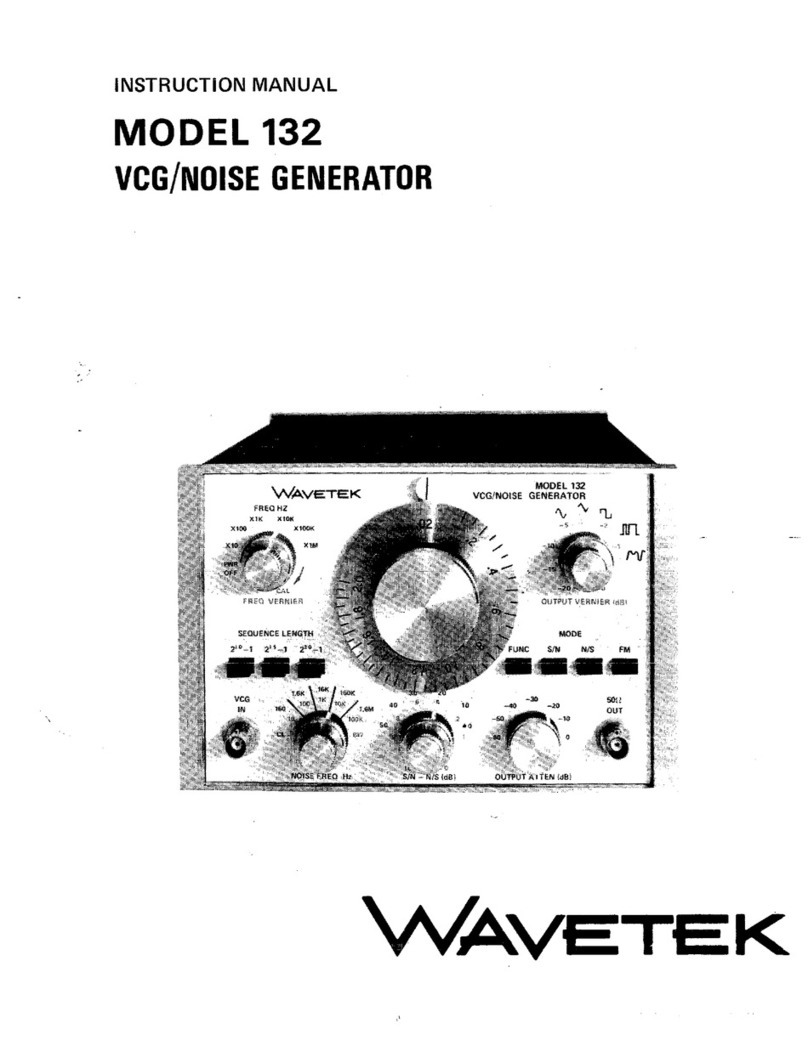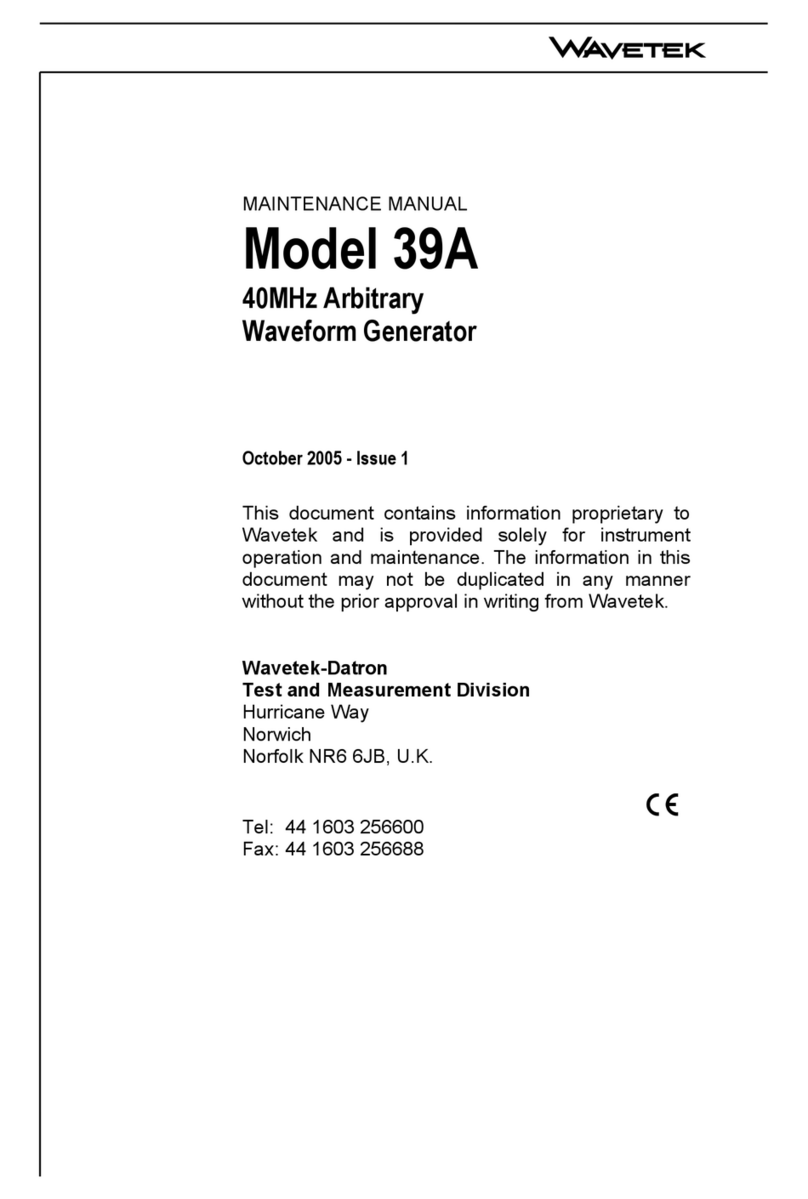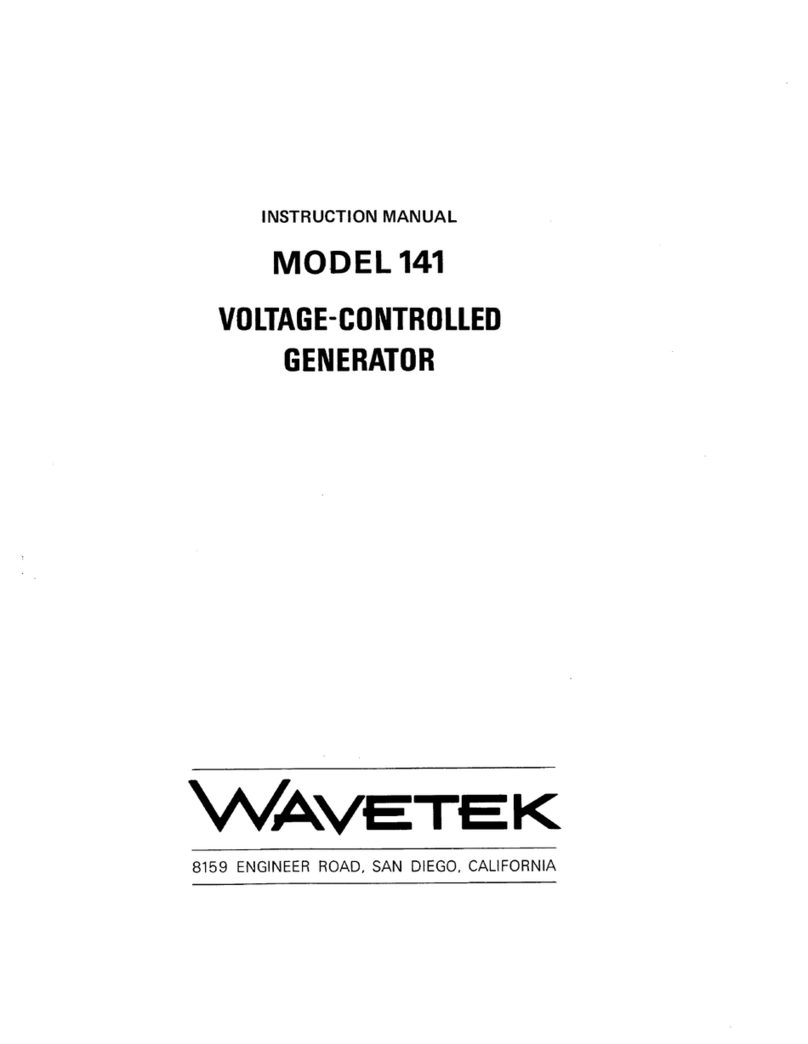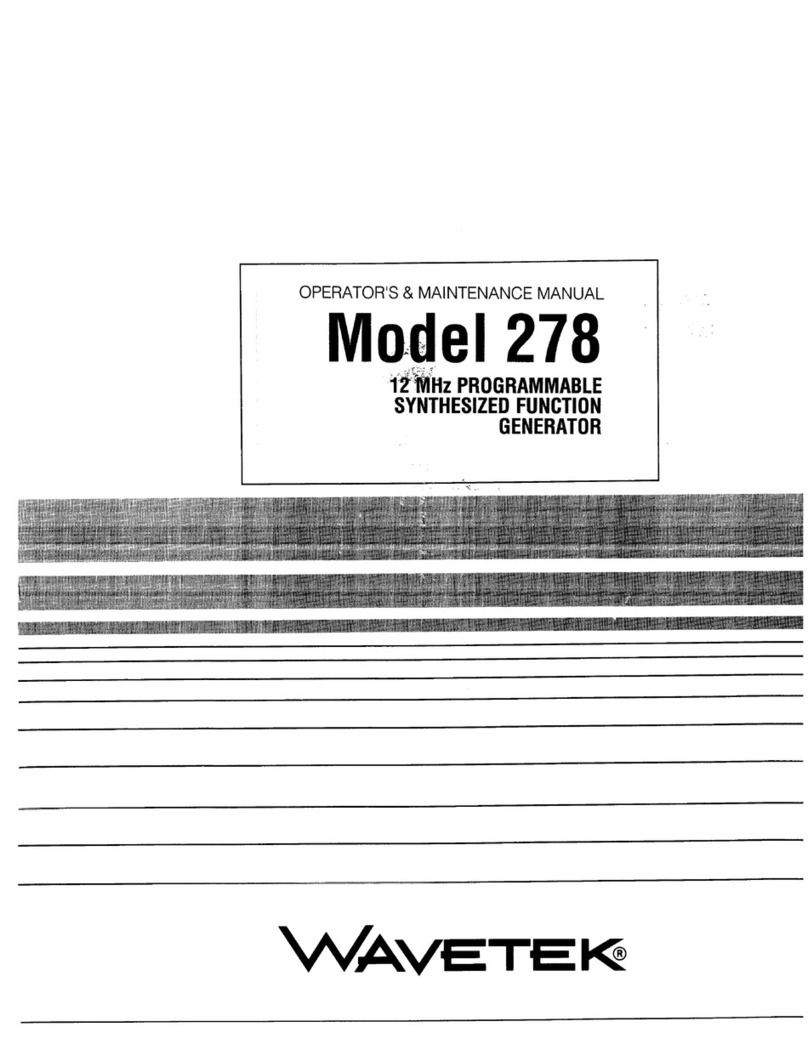
CONTENTS (Continued)
3.3.3.1 CALibrate Subsysiem
...................................................................
3-7
3.3.3.2 TEST Subsystem
.......................
..
.............................................
3-7
3.3.3.3 INlTiateSubsystem
......................
..
........................................
3-8
3.3.3.4 OUTPut Subsystem
......................................................................
3-8
3.3.3.5 RESet Subsystem
..............................................
....
..........
3-8
.....................................................................
3.3.3.6 SOURceSubsystem 3-9
3.3.3.7 SYSTem Subsystem
....................
.....
....................................
3-12
3.3.3.8 TRlGger Subsystem
....................................................................
3-12
3.3.3.9 DlAGnostic Subsystem
................................................................
3-13
.......................................
.....................
3.3.3.10 STATUSSubsystem
....
3-14
.............................
3.3.4 IEEE 488.2 Common Commands
.....................
..
3-16
3.4 MODEL 1391OPERATION
........................................................................
3-16
3.4.1 Outpur Terminations
............................................................................
3-16
.......................................................................
3.4.2 Input/Outpul Protection 3-17
3.4.3 PowerOn/ResetDefaults
....................
..
...........................................
3-17
............................................
........................
3.4.4 Continuous Operation
..
3-17
......................................................
3.4.4.1 Frequency/Period Parameters 3-19
.........................................................................
3.4.4.2 Pulse Parameters 3-19
...............................................
..........................
3.4.4.3 Output Levels
..
3-19
3.4.4.4 PulseISquareFunctions
................................................................
3-20
3.4.5 Marker Operation
.....................................
........................................
3-20
3.4.6 SUMBUS Operation
...................
..
..........................................
3-20
3.4.7 PAM Operation
....................................................................................
3-21
3.4.8 Triggered Operation
....................
,
......................................................
3-22
.............................
................
3.4.8.1 Level and Slope Parameters
...
3-23
3.4.8.2 ExternalTrigger Inpul
................................................................
3-23
3.4.8.3 InternalTrigger
............................
..
..........................................
3-23
3.4.8.4 BUS Trigger Commands
..........................
..............
................
3-23
3.4.8.5
VXI
Trigger Bus Input
...................................................................
3-24
3.4.9 Gated Operation
.......................
..
..................................................
3-24
3.4.9.1 ExternalWidth Operation
...................
...
.............................
3-25
3.4.10 Rurst Operation
...................................................................................
3-26
3.4.11 MasterJSlaveOperation
............................
...
..................................
3-26
3.4.12 Status Commands
..........................................................................
3-26
SECTION
4
CIRCUIT DESCRIPTION
4.1 INTRODUCTION
........
.....,
........
.,
...............................................................
4-1
4.2 VXI INTERFACE BOARD
...........................................................................
4-2
4.2.1 VXlbus Overview
.................................................................................
4-2
4.2.2 Interface Board
....................
,
..........................................................
4-2
4.3 PULSE GENERATOR BOARD
-
DIGITAL CIRCUITS
.................................
4-3
...................................................
4.3.1 Interconnect and Power Distribution 4-5
...................
........................
4.3.2 Digital Interface and Data Registers
...
4-5
.......................................................................
4.3.3 Frequency Synthesizer 4-7
4.3.4 Trigger Amplifier
.................................................................................
4-8
4.3.5 VXlbus TTL Trigger Receiver
..............................................................
4-8
4.3.6 VXlbus ECLTrigger Receiver
...........................................................
4-8
Artisan Technology Group - Quality Instrumentation ... Guaranteed | (888) 88-SOURCE | www.artisantg.com
